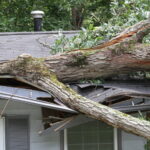Pest control services are instrumental in upholding the well-being and safety of our living environments. Conventional pest control methods previously heavily relied on chemical pesticides, which had detrimental impacts on the environment and human health. There has been a paradigm shift toward a more sustainable and efficient approach known as Integrated Pest Management. Integrated Pest Management represents a comprehensive approach to pest control that prioritizes prevention, monitoring, and control techniques. The fundamental principle of IPM is to understand the pests’ biology, behavior, and ecology to develop targeted strategies for managing them effectively.
Components of integrated pest management
- Pest identification and monitoring – The first step in IPM is identifying the pests present and understanding their life cycle, habits, and vulnerabilities. By monitoring their population levels, pest control professionals determine the appropriate time and methods for intervention.
- Prevention – IPM places great emphasis on preventing pest infestations in the first place. It involves identifying and eliminating potential entry points, sealing cracks, repairing leaky pipes, and practicing good sanitation and hygiene. Removing the conditions that attract pests, their ability to establish and thrive decreases.
- Cultural controls – IPM encourages the use of cultural practices to manage pests. It may include selecting pest-resistant plant varieties, promoting natural predators, and implementing proper waste management techniques. Creating an unfavorable environment for insects greatly reduces their impact.
- Biological controls – Utilizing nature’s pest control mechanisms, IPM promotes natural controls such as predators, parasites, and pathogens to manage pest populations. A more sustainable ecosystem is achieved by reducing the use of chemical pesticides and using this approach.
- Mechanical and physical controls – When necessary, IPM incorporates mechanical and physical methods to control pests. It involves trapping, exclusion techniques, and the use of barriers to prevent pests from accessing vulnerable areas.
- Chemical controls – While IPM focuses on minimizing chemical pesticide usage, there are instances where it may be necessary. In such cases, IPM encourages the use of low-toxicity or targeted pesticides judiciously and responsibly.
Impact of IPM on pest control services
When it comes to managing spiders that bite humans, IPM offers several advantages over traditional pest control methods. Rather than relying solely on chemical sprays that may harm beneficial insects and other non-target organisms, IPM takes a comprehensive approach. By understanding the behavior and biology of spiders that pose a risk to humans, a pest control professional devise a targeted solution. It may involve removing webs and potential nesting sites, implementing exclusion techniques, and using insect traps to capture and remove spiders without indiscriminately harming other creatures.
Integrated Pest Management reduces the dependence on chemical pesticides, thereby decreasing the potential hazards posed to humans, pets, and the environment through exposure to such substances. This is particularly important when dealing with spiders that bite, as the risk of accidental pesticide exposure reduces. Rather than providing a temporary fix, IPM focuses on long-term prevention. By addressing the underlying conditions that attract spiders, such as cluttered areas, excessive vegetation, and inadequate sealing, IPM aims to create an environment that is less conducive to infestations. Integrated Pest Management promotes ecological balance by utilizing biological controls and minimizing the use of chemical pesticides. It helps protect beneficial insects, birds, and other organisms valuable to the ecosystem.










